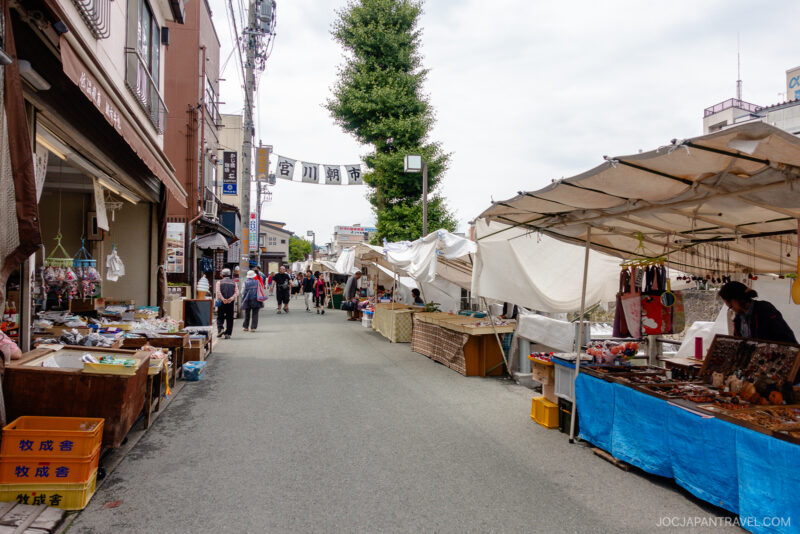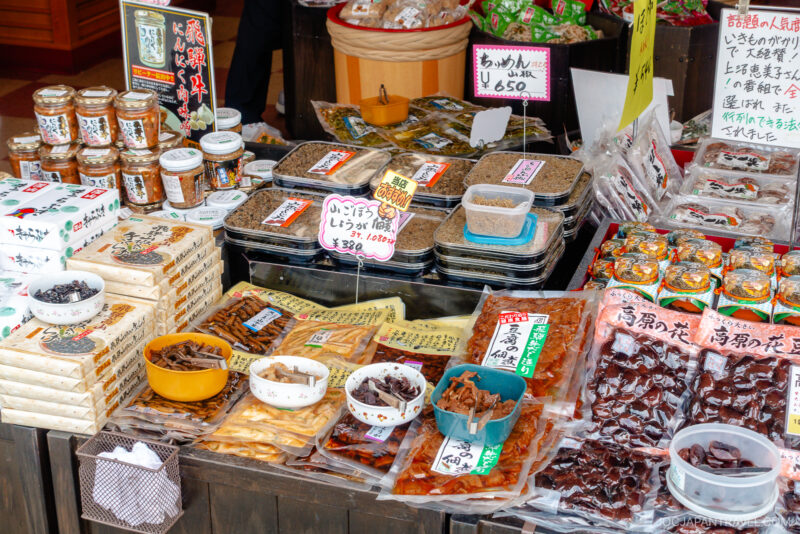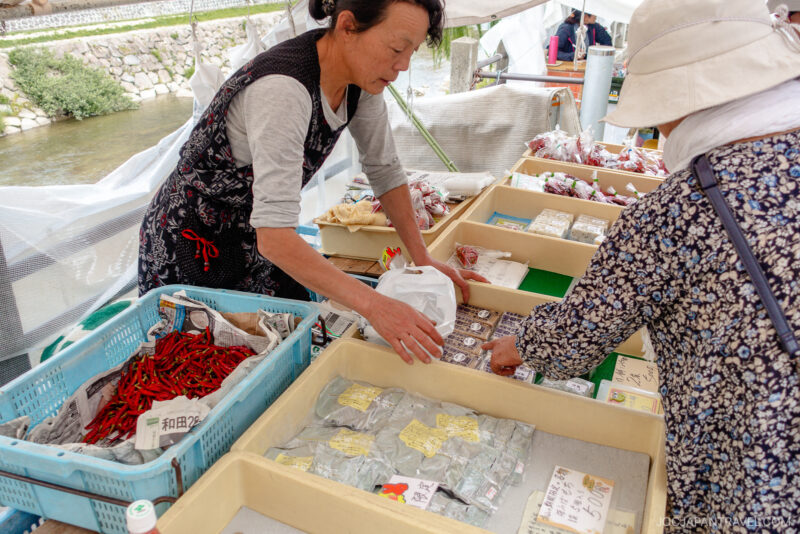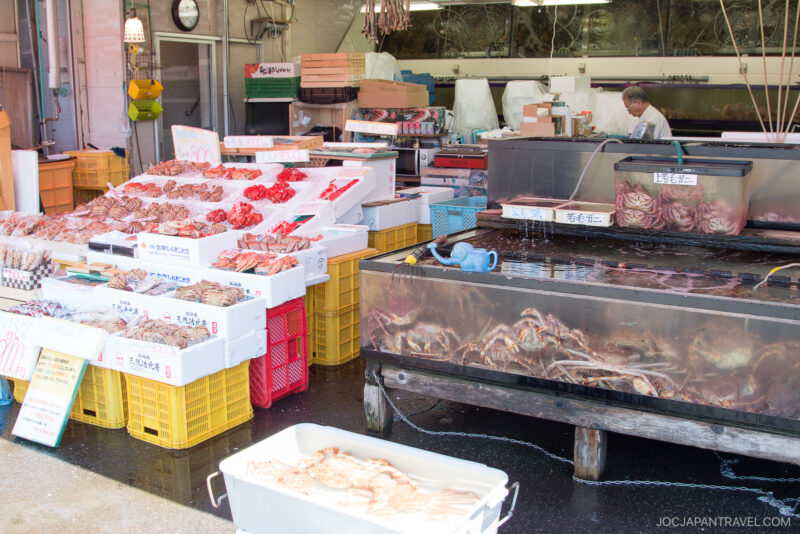This post may contain affiliate links. Please read our disclosure policy.
Start your day in Takayama with fresh produce, regional treats, and handmade crafts at the lively Miyagawa Morning Market.

A Morning Stroll Along the Miyagawa River
During our stay in Takayama, we loved starting the day by visiting the Miyagawa Morning Market (宮川朝市). Set along the banks of the Miyagawa River, this daily open-air market has been part of the community for over 200 years. It’s a wonderful blend of local life, tradition, and craftsmanship—and it’s especially fun if you enjoy browsing handmade goods and sampling regional flavors.
We found that visiting early in the day gave us the best experience. Not only was the weather cooler, but the selection of produce and food was at its freshest.
What You’ll Find at the Market

There are actually two morning markets in Takayama: Miyagawa Market and Jinya-mae Market. Both are worth seeing, but the riverside Miyagawa Market is the larger of the two.
As we walked along the stalls, we saw all kinds of seasonal fruits and vegetables, local pickles, and beautiful flowers. There were also homemade miso pastes, freshly baked bread, and regional sweets. Many of the vendors were farmers or local artisans, which gave the market a very personal feel.
One of the most interesting items we bought was hoba miso (朴葉味噌)—a rich miso paste sold with a dried magnolia leaf. It’s meant to be grilled on top of the leaf and served with rice. We rarely see it outside this region, so it made a great souvenir.
Curious to see how we used hoba miso? Check out Nami’s Hoba Miso With Beef recipe.
A Connection to Local Life

What stood out to us was how authentic and community-oriented the market felt. Locals chatted with stall owners about what was in season, while travelers like us asked questions and learned about the region’s food culture. We even got to sample a few homemade tsukemono (pickles) and fresh yuzu marmalade.
It’s a great place to take photos, learn about local ingredients, or just enjoy the relaxed rhythm of rural Japan. If you’re traveling with kids, there’s plenty to see and try, and it’s easy to stroll without rushing.
Just make sure to bring some cash and a reusable bag—we ended up buying more than we planned!
How to Get to Miyagawa Morning Market
On Foot
- From the east exit of Takayama Station, head straight along Ekimae Chuo-dori Street for about 5 minutes toward the Miyagawa River. After crossing the river, make a left on the first street.
- It’s an easy and pleasant 10-minute walk, even with children or a stroller.
Taxi
- A taxi from Takayama Station to the market costs about ¥700 and takes less than 5 minutes.
Pro Tip: Plan to visit before 10:00 a.m. for the best selection and fewer crowds.
Is Miyagawa Morning Market Worth Visiting?
Yes, without a doubt. Miyagawa Morning Market isn’t just a pretty riverside stroll. We loved how it gave us a glimpse into local life, from chatting with friendly vendors to sampling fresh snacks and handmade goods. It felt warm, down-to-earth, and full of charm.
If you’re spending time in the Hida region, we totally recommend starting at least one morning here—it’s a lovely way to ease into the day.
More to Explore Nearby
After sampling local produce and handmade snacks at Miyagawa Morning Market, enjoy more of Takayama’s nearby charm and heritage:
- Jinya Asaichi Morning Market – Visit Takayama’s other historic morning market held near the former government office.
- Takayama Old Town – Just across the river, walk along Edo-period streets lined with merchant shops and sake breweries.
- Takayama Jinya – Step inside the only remaining Edo-era government outpost in Japan, preserved with tatami rooms and archives.
- Nogawa Udon – Stop by this local favorite for handmade udon noodles served in traditional wooden tubs.




